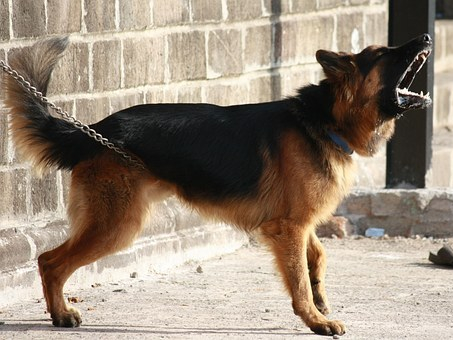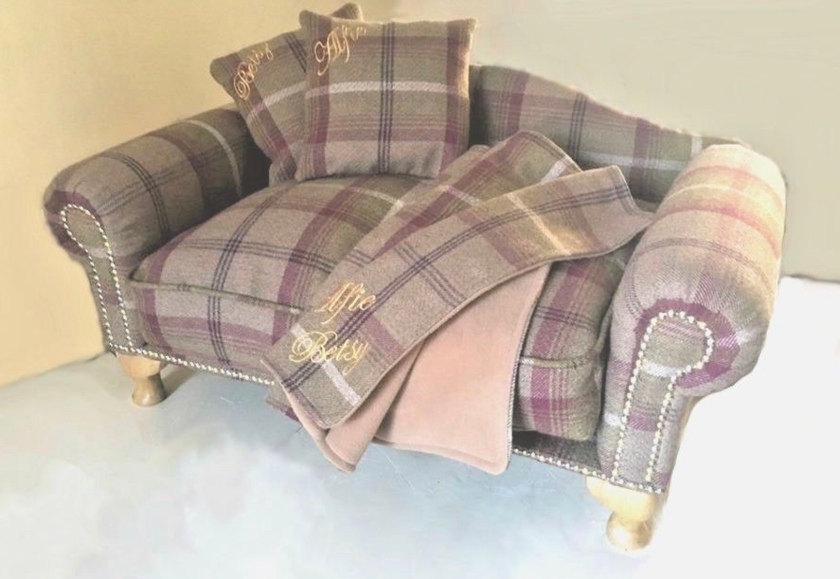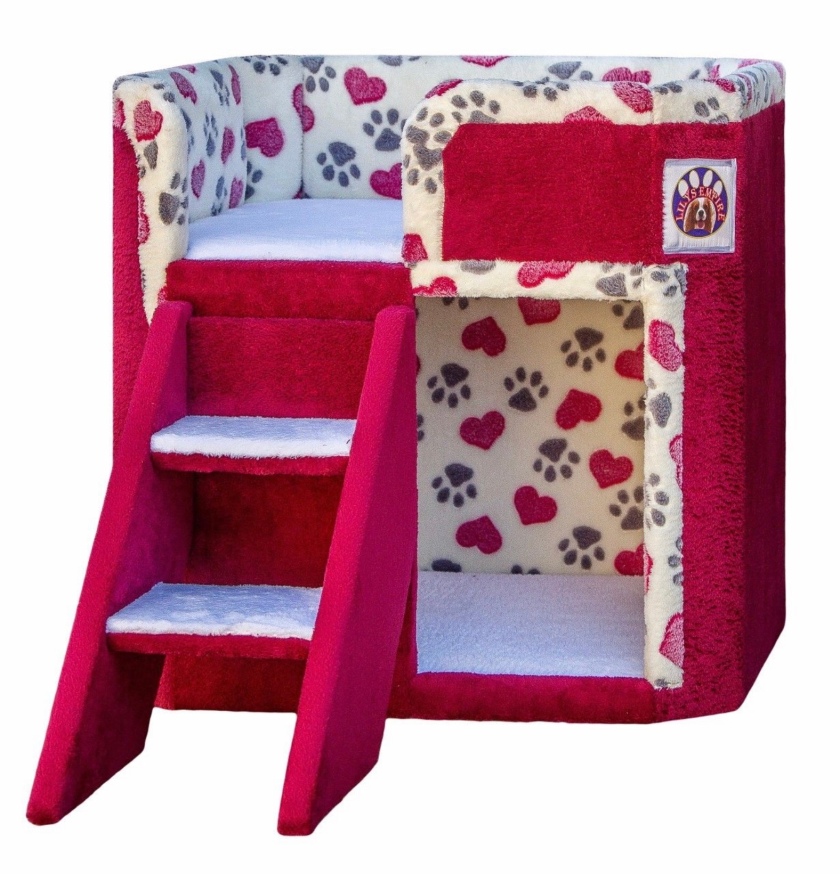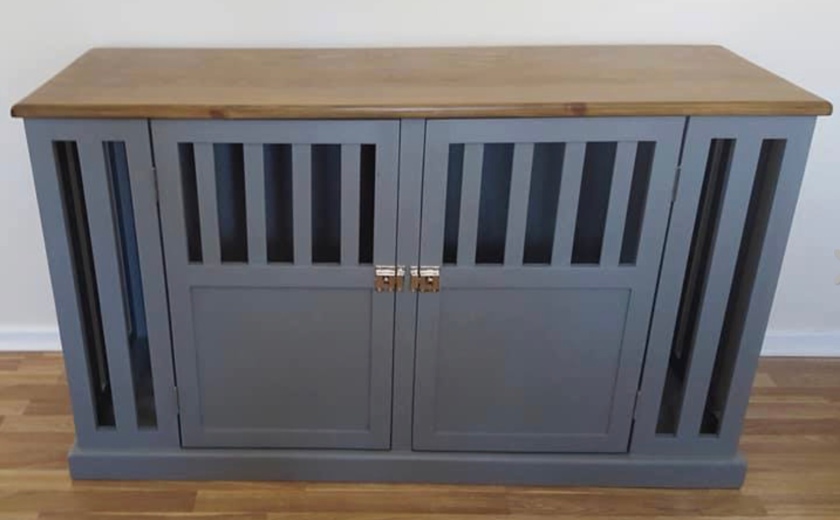Most people hate barking, more so, excessive barking. Though barking can be a nuisance, it is completely natural for a dog to bark. It is one of the dog’s most important forms of communication.
People have used various ways to try to stop their dogs from excessively barking, such as, collars that spray or shock the dog when it barks, to actually removing the dog’s vocal cords (which doesn’t stop them from barking, it just changes the tone of their bark, which can actually be more annoying than before).
If your dog barks, there is a reason for it. If there is a reason, then there is a solution.
However, before looking at the solutions, we need to understand dog’s natural instincts as animals and the reasons behind the barking.

Dogs think it is their job is to bark – as a warning, to protect their home, alert people about danger, scare prey out of hiding, and to protect their owners/other pets. Some dogs bark due to anxiety, attention seeking, because they are excited, are responding to other dogs or because they are bored.
Despite what most people think (admittedly, me included back before I did my research), dogs don’t bark to annoy us – they are either in protection mode, are being playful, have nothing else to do or they are scared.
In fact, the best crime deterrent is a barking dog. However, if a dog’s barking is becoming a public nuisance, you need to change the situation.
DID YOU KNOW: In most cases, excessive barking whilst you are out is your dog’s way of making an effort to call you back to the pack.
If You Can Understand A Dog’s Mindset, You Will Have No Problems Training Your Dog To Stop Barking
Many dog owners ask: why does my dog bark so much? Probably because they were bred to. We bred barking into our dogs because it was useful to us.
For example:
Beagle’s are bred for their hunting abilities, and the breed will often bark and howl to scare prey out of hiding for hunters. The same goes for Parson Russell Terriers, and many other dogs of similar breeds. The Lhasa Apso has been bred back as far as the year 500 in Tibet. For many years, the Lhasa Apso was bred only by men of wealth and holy men, originally being kept in monasteries primarily as indoor guard dogs to give a warning bark to the monks (if ever intruders or uninvited guests managed to get past the Tibetan mastiffs used as outdoor guard dogs).
Another fact, many wild canids (a group of related, dog-like animals including wolves, foxes, coyotes, jackals, dingoes, and domestic dogs) do not bark at all.
Because barking is a common trait in many breeds of dogs, you will not be able to erase these dogs natural instinct to bark completely, but you can learn to take control and reduce it significantly.
There are also many breeds of dogs that naturally don’t bark excessively (and will keep your neighbours happy).
Firstly, you need to think about where and when you want your dog to bark (i.e. to protect the household), and work towards stopping excessive and nuisance barking. When the barking has become a nuisance, the dog owner needs to take a responsible attitude to the barking of their own dog(s).
Well done you for looking for a solution and are willing to work with your dog! You are a responsible dog owner and that is something to be proud of!
Dogs are well known for their ability and desire to please. Remember this when you begin to train your dog to stop barking. It may seem difficult at first but once you get into a routine and your dog begins to understand what you expect of them, but things will get easier and the barking will be well under control with a little time and effort.
Please don’t expect things to happen over night, resulting in you becoming disheartened and giving up. You have already made the first step by looking in to how you can get your dog’s excessive barking under control.
Time and Effort = SUCCESS
Sometimes a dog will be a slow learner, and this can be frustrating. It might make things easier if you ask yourself: what is going on in your dog’s mind?
Understanding From Your Dog’s Perspective
If you are having trouble with your dog, the first thing to ask yourself is: where are things going wrong and how do you rectify it?
Everyone’s living situation is different, so only you can honestly answer this question. That is your second step to accomplishment. Sit and think to yourself. Is your dog’s barking worse when:
- The dog is left at home alone for long periods? Do you work long hours?
- A stranger approaches your home, or whilst you are out with your dog on a walk?
- The dog is excited when you return home?
- Someone knocks on the door or rings the doorbell?
- At other dogs?
- Your dog is in their crate?
- At night time?
- The dog is bored?
- The dog is wanting attention?
- The dog is wanting their food/water?
- Your dog hears another dog bark or howl (response barking)?
- Every time your dog hears a noise?
- All of the above?
Since you know your dog more than anyone else, you are the best person to recognise why your dog is acting this way.
Your dog is trying to tell you something when they bark – only you can take note and figure out what they are barking for.
Tips On Controlling Your Dogs Barking
- You need to correct your dog’s problem behaviour and follow it through.
- Tell your dog to stop barking using a sound, look or physical correction (but NEVER hit the dog).
- Stay calm and assertive when trying to stop your dog barking. You have to be cool, calm and collected because dogs do not follow unbalanced leaders.
- Don’t shout or show your frustration – your dog will see this is you joining in and will think you are approving of their behaviour. A quiet but assertive ‘no’, which will do more to stop your dog’s barking than your loudest scream.
- Don’t pick your dog up when they are barking, they will see this as a positive reinforcement by immediately receiving affection every time they bark.
- As soon as your dog starts barking, throw some hard treats or dry dog food at a hard surface (hard floor, door, cupboard etc). Your dog will run around and eat them all up, and will more than likely look at you for more. Now you have silence and the dog’s attention.
- If your neighbours have complained that your dog starts to bark pretty much as soon as you leave your house, then it’s a good idea to trick the dog by making the dog think you have left. First, make sure your dog sees you leave. Then, return silently to ‘catch your dog out’ and make the necessary corrections. This may have to be repeated several times.
- If your dog is barking at the same person, object, place or situation you need to show your dog that you are the leader and that particular thing is yours. To do this, you need to create an invisible wall that your dog is not allowed to cross. Focus and be assertive, and if your dog is still trying to dominate the situation give the dog a look, distract them with a sound and stand in their way to block the view of the object/person etc.
- Throw something on the ground near your dog (not at it) or shake a penny tin, which will make a loud startling clatter every time your dog barks.
- Your dog needs to be challenged, both mentally and physically, as a lot of their barking comes from too much pent up energy. Take your dog for a good walk daily and provide them with a lot of mental stimulation – switch their toys up frequently so they don’t get bored, play games of chase or fetch, do activities with your dog that challenge their brain, provide your dog with bones/chews to satisfy their chewing urge etc. In general, just your presence and interacting with your dog every day will get rid of a lot of your dog’s frustration. It does not mean you have to spend all day doing these things – just make this time quality time. Get into a routine to fit in time to have one-to-one attention with your dog around your lifestyle.
- Turn on the TV or radio (low volume) to distract your dog from noises that may induce barking (and to keep the dog company if they suffer from separation anxiety).
- Consider bringing in a professional trainer/behaviourist is all your efforts fail or you are finding it difficult to be calm and assertive due to frustration. They will not only help your dog but they will help you to gain control.
- Excessive barking is often due to pent up energy. To stop your dog’s barking, you need to give them a job to do. If your dog is already getting plenty of exercise through their daily walk, then you can up your game. You can get your dog a weighted vest. A weighted vest not only helps improve your dog’s overall health and condition allowing them to stay strong, active, happy and playful for years to come but also help combat obesity, diabetes, anxiety and over energised dogs. Simply wearing the vest each day helps them fight these issues.
(Worldwide shipping)
- There are several anti-bark collars you could try:
(Click on links for further information on how each one works depending on manufacturer)
Citronella Collar – Releases a spray of citronella when the dog barks.
Ultrasonic Collar – Sounds of an ultrasonic sound that only dogs can hear. May be bark or remote activated.
Shock Collar – Humanisation design is harmless to your dog. The product will shock increasingly as soon as the dog barking. May be bark activated or remote activated.
You Can Learn Your Dog To Stop Barking On Cue
To be able to learn your dog to stop barking on cue, you need to learn your dog to bark on command (‘speak’) first so the dog can truly grasp the meaning of ‘quiet’. As well as being beneficial for use with problem dogs, learning your dog to ‘speak’ is also beneficial if you want to go on to train more complex tricks. What’s more, it is so easy to achieve:
- You will need your dogs favourite treats, a clicker, your dogs favourite toy and something that you know always gets your dog to bark (for example, if your dogs always barks at the door bell or knock at the door, get someone on hand to ring the bell or knock).
- Choose a simple word, such as ‘speak’, ‘bark’, or ‘talk’, that you will use for the bark command.
- Create a situation that you know will cause your dog to bark (again, such as ring the doorbell or knock on the door).
- You may be able to get your dog excited enough to cause them to bark, for example, with their favourite toy.
- When your dog barks, say your chosen bark command word, click the clicker and immediately give the dog a treat.
- Repeat this process several times until your dog understands the bark command word without the need for a barking stimulus.
Now your dog is ready to learn the incredibly useful command – teaching the dog to be silent when you give the ‘Quiet’ command:
- Again, you will need your dog’s favourite treats, a clicker, your dog’s favourite toy and something that you know always gets your dog to bark.
- Choose a simple word, such as ‘quiet’, ‘silent’ or ‘hush’, that you will use for the quiet command.
- Create a situation that you know will cause your dog to bark. You could always leave it to chance that someone will knock at the door, but so you are fully prepared and ready, it is best to plan to create a situation until your dog gets a hang of the quiet command.
- Focus your attention on your dog. If the dog stops and looks at you (even for a second) click and treat. Repeat this every time the dog ceases to bark.
- After repeating this several times, begin to add your chosen command word when the barking stops, then click and treat immediately.
- Repeat until your dog has mastered the quite command.
- When your dog has begun to get the hang of the quiet command, start to try for longer duration’s of silence before clicking and treat.
- You can start to add hand signals whenever you give the command, which will help, as the dog will associate it with the quiet command.
Try not to rush things. Teach your dog each command at different times; otherwise, this will confuse the dog. It is probably best to work on the bark command for a few days, until the command has been well mastered and continued practice, before learning the quiet command.
Over time, once your dog learns ‘bark’ and ‘quiet’ separately, you can use them together. Have your dog speak a few times, and then tell the dog to be quiet.
How To Monitor Your Dogs Barking Whilst You Are Out
Unless you are good friends with your neighbours who can call you while you are out to inform you that your dog is disrupting the peace, how do you know what your dog is up to?
I personally use this: (Click here)
I love the fact that I can view, listen and speak to my dogs while I am out for more than a couple of hours. You can also set a siren, which instantly distracts and quietens dogs from barking. Is your dog doing something cute? You can take photos too!
More Information On Guardzilla All-In-One Home Security System:
Guardzilla is an all in one home security system. Simply plug in and sync to your Wi-Fi, Guardzilla’s app is highly customizable allowing the owner to use the device in a number of ways. Guardzilla’s camera will show a live feed of what it sees, but once armed will send you notifications if its motion detection senses a disturbance. Other features include a 100dB siren, infrared night vision, pet immunity, auto arming and disarming, and two way audio just to name a few. (For indoor use only).
Other Reasons You Dog May Be Barking
Improper confinement such as restrictive tethering, being locked in a pen alone for long periods, or lack of shelter can all lead to a dog that barks excessively. Your dog may even be hot, cold, hungry or thirsty.
Always keep in mind that your dog might bark because he is ill, which commonly causes dogs to express themselves through excessive barking. Visit your vet if you do not see a clear cause for your dog’s increased barking, or if you struggle to solve the problem on your own.




























